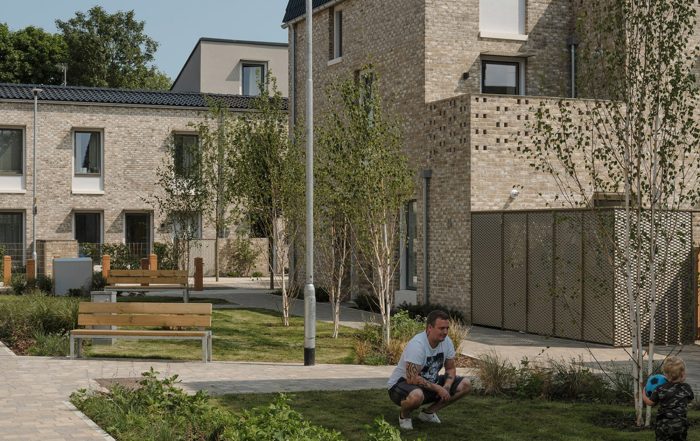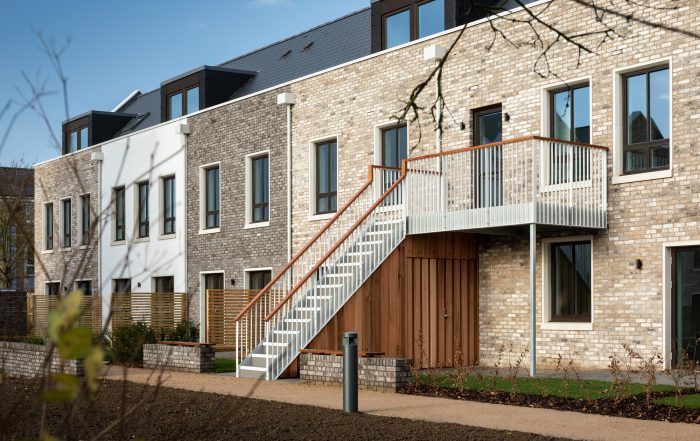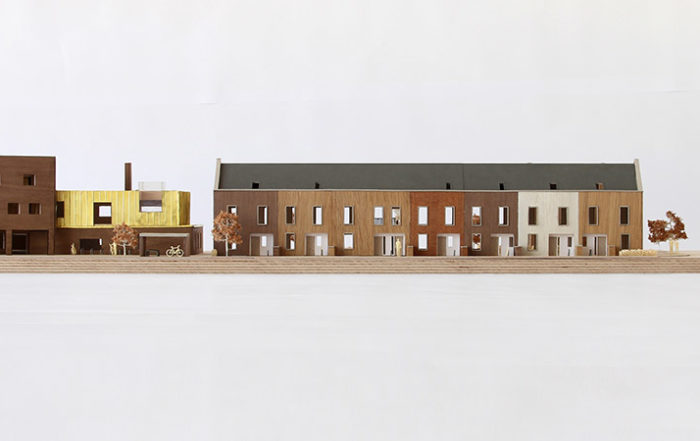21st November 2019
THE STIRLING PRIZE & THE PROPERTY INDUSTRY.
21st November 2019
THE STIRLING PRIZE & THE PROPERTY INDUSTRY.
Share
In the usual flurry of coverage and commentary following last month’s RIBA Stirling Prize announcement, one thing stood out: the consensus that, this year, the judges had got it right.
The architectural community and media were at one in heaping praise on the scheme. It was similar in the mainstream press: The Guardian described the project as a ‘masterpiece’, while the Daily Mail asked if it offered the ‘future of council housing’. Even commentators as far ranging as Owen Hatherley and Nicholas Boys-Smith of Create Streets found themselves in unlikely agreement.
If there’s been debate, it’s been about why, and not whether, Goldsmith Street deserved to win.
Why did this honest, understated housing development capture such goodwill? Its earnest, back-to-basics architectural form? The way it so consciously placed people and environment at its core? Or its being the only council housing ever to have been shortlisted? It was all these but more: Goldsmith Street stands as a beacon of hope for a housing sector that we in the UK have all but given up on.
Little doubt, then, that the recognition of this ‘modest masterpiece’ sends an important message. But the question is: are the right people listening?
Amid the post-Stirling noise and analysis, one thing was noticeable: a deafening silence from the rest of real estate. Estates Gazette mustered a measly two-line mention in its news pages while Property Week didn’t cover it at all. The Royal Institute of Chartered Surveyors – the UK’s largest built environment membership body (with three times the membership of the RIBA) – ignored the Stirling Prize altogether. Not one of the Twitter accounts of the major residential agencies reported the news at all. For a moment that seemed so important, this felt like an astonishing and almost wilful lack of engagement from the wider residential sector.
So, it’s a fairly safe bet that news of the Stirling Prize will barely have registered with Barratt, Bovis and Bloor – let alone have prompted a moment of much-needed self-reflection.
In a country where six in ten of our new homes are delivered by a handful of huge PLC housebuilders, it’s going to take a lot more than a housing scheme winning the Stirling Prize to achieve change in the sector. Because the fact of the matter is that the people who are in control of our housing delivery just aren’t interested in being part of the conversation.
For the lessons of Goldsmith Street to have a mainstream impact, they need to be embedded in political action.
First, councils should build vastly more than they do today – and not only affordable housing. Councils taking the lead on delivering high-quality, mixed-tenure housing would send a clear signal to the private sector that it means business. Funding needs to be tuned to enabling this. Down the line, maybe councils that do this well should have the rights to step in where the private sector is failing to deliver.
Second, publicly owned land must be squeezed for maximum benefit: not only for council housing, but to enable alternative forms of delivery that will deliver the housing we need – whether SMEs or community-led models.
Third, design guidance and building regulations need to get much tougher. The National Design Guide is in some ways our best expression yet of what we want to achieve, but until it goes further, for example in imposing higher density requirements, lower parking levels and better environmental performance, housebuilders will drive a coach and horses through it.
What’s clear is that unless there is clear political ambition, coupled with action, this Stirling Prize will remain the exception. The real estate sector will continue to turn a deaf ear, and the volume housebuilders will continue to do as they’ve always done, in the way they’ve always done it.
This article by Jonny Anstead was originally published in the Architects’ Journal.
Image © Tim Crocker.



